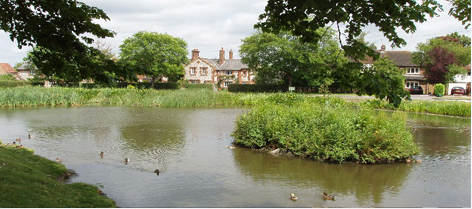
REMEMBRANCE Sunday had a special significance this year here in Penn and Tylers Green as it did in the rest of the country.
It was, of course, the first to be celebrated since the death of Queen Elizabeth II, our last living royal link with the Second World War.
In Tylers Green, memorial trees have been planted in memory of 16 men killed in that war and named on the St Margaret’s Church war memorial.
Earl Howe, the patron of the church, dedicated the trees as part of the Armistice Day ceremony on the front common on Friday 11 November (see more details below).
Here, alphabetically listed, you can discover a little more about the 31 men who gave their lives in the Second World War and who are commemorated on the Penn Church and Tylers Green church war memorials.
Aged between 19 and 50, from all walks of life, they left their comfortable surroundings to fight for their country, some with enthusiasm; others with great trepidation.
They all sacrificed their tomorrows so we can enjoy our todays. The very least we can do is remember them.
William Henry ‘Harry’ Andrews
A pilot officer in the Royal Air Force, William Henry Andrews, known as Harry, gained his pilot’s licence in 1937 when he was 28, and enlisted with the RAF during the Battle of Britain in August, 1940. He gained his commission a year later, the same year he married his fiancée Sybil Webb. Their son was born in 1942 but in March that year Harry was killed in a mission over Germany. He is buried in a village churchyard near Dortmund.

Christopher E. Birch
The Master at Arms on HMS Berwick, Christopher lived at Endwood, Hazlemere Road in 1939. The cruiser had a distinguished war record taking part in battles off Norway, the north Atlantic and the Mediterranean. Christopher, a former rope and twine finisher, died in 1946 in the Bucks and Berks Sanitorium near Henley aged 46.
Leonard Alfred Charles Bone
Leonard was the leading photographer on HMS Hermes, the first Royal Navy ship to be designed as an aircraft carrier. It was sunk off Ceylon (now Sri Lanka) on 9 April, 1942 during an incessant attack by Japanese dive bombers. Leonard was one of 370 crew members lost that day. He was 23 years old.
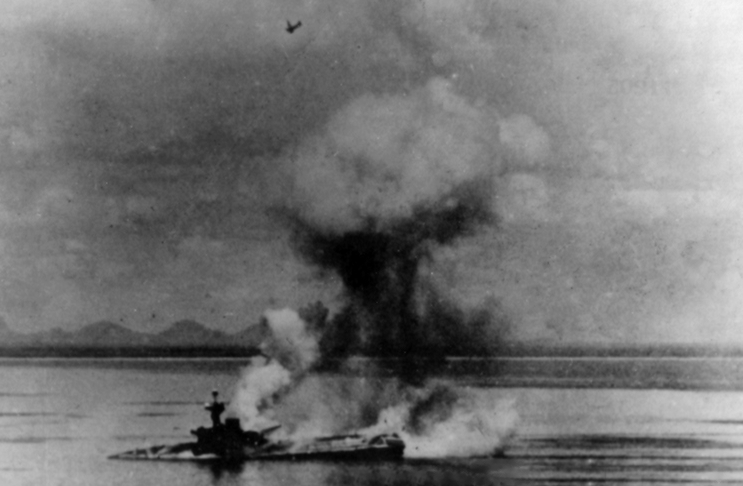
Albert Brooks
Albert, whose parents lived at Widmere Cottage in Tylers Green, was a gardener in the village when the war began. He joined the Hampshire Regiment and in 1944 he found himself, at the age of 21 and as a lance-corporal, in the bloody battles to push back the German defences in Italy. He died on 5 September of that year and is buried at a war cemetery in northern Italy.
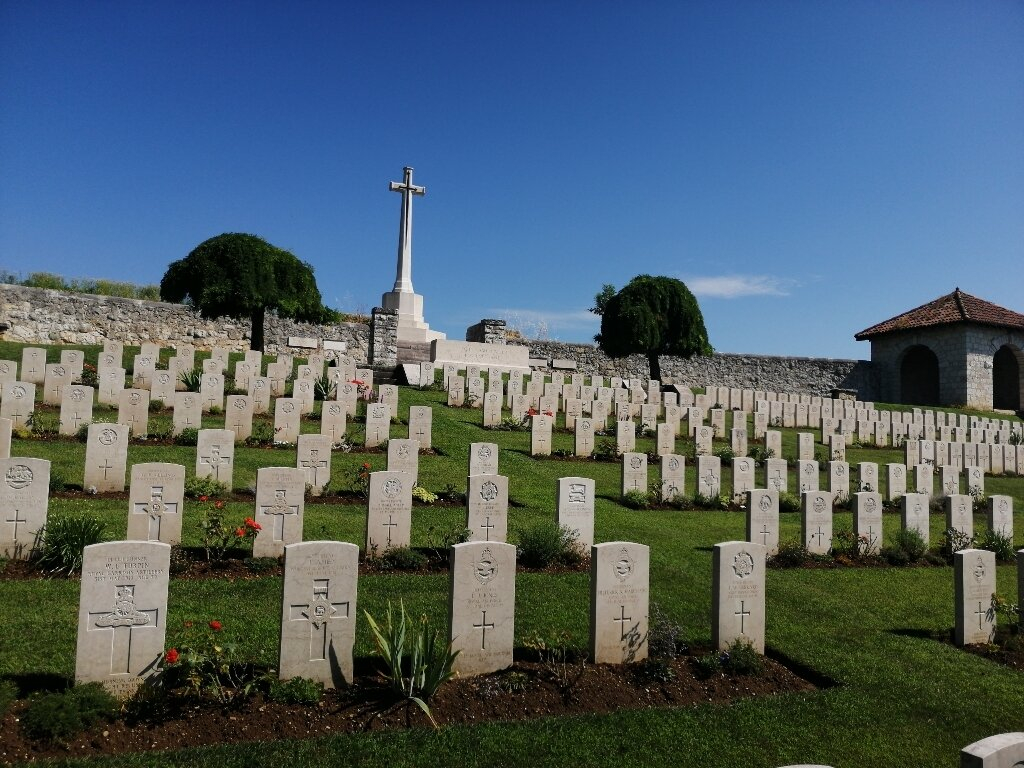
Ernest Busby
A former gardener at Stampwell House in Church Road, Penn, Ernest was a driver with the Royal Army Service Corps when he was taken prisoner in the desert campaign in north Africa. He was one of 783 prisoners being transported in an Italian ship when, in one of the great tragedies of the war, it was torpedoed by a British submarine in November 1941, the captain having no idea who was on board. There were no survivors. He was 30 years old.
Hilary Charles Caldwell
Hilary was a Squadron Leader in the Royal Air Force Volunteer Reserve who, in the later part of the war, was an assistant air attache in Madrid. He was killed in a flying accident in Spain aged 43 on 18 May, 1944 and is the only British World War Two casualty in the Madrid British cemetery. He lived with his wife Rona and daughter Susan in Grenfell Road, Beaconsfield.
Alfred Brian Spencer Chennells
Alfred, who in 1939 lived in Hammersley, Hammersley Lane, Tylers Green was a major in the Royal Artillery when he died on 4 May, 1942. He was a member of the 100 Heavy Anti-Aircraft Regiment whose men had defended Glasgow in the early part of the war and then took part in assault landings in Sicily and later Italy. He died aged 37 and is buried at St Margaret’s.
Dennis John Charles Child
Dennis was aged 19 when he accidentally drowned in a training exercise in Kent on 22 May, 1943. He was a private in the 4th Battalion of the Somerset Light Infantry whose men went on to take part in the D-Day landings a year later. A former assistant to Mr Sturgess, a village butcher, he lived with his parents in Pentre, Hazlemere Road.
Thomas Church
Although there is a headstone to Thomas in Penn churchyard and he is mentioned on the war memorial, there is no apparent record as to how he died. He was a warrant officer in the Royal Air Force and died on 18 June, 1942 aged 44. His parents were known to live in Penn and Thomas and his wife Violet in High Wycombe.
Thomas Dilworth
Thomas, of Beauchamp Cottage, Penn was 18 when he enlisted in 1941 and joined the Royal Air Force to train as an air gunner. In 1943, promoted to sergeant, he was returning from an operation over the western desert in north Africa just two weeks before the Allies successfully completed their campaign, when his plane crashed in poor visibility, killing all the crew. He was 19 and is buried with his crewmates near Algiers.
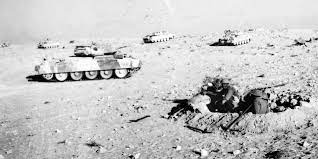
Lewis Thomas Galsworthy
Lewis was a Field Ambulance driver, part of the Royal Army Service Corps, who was in Singapore in February 1942 when the Allies surrendered to the invading Japanese. He was taken prisoner of war and used as forced labour to build the Burma-Siam railway and died in October 1943. He was 30 years old and before the war lived with his wife in a cottage called Widmore in Tylers Green.
Edmund Grove
Edmund, a Harrow educated salesman and motor engineer of Church Road, Penn enlisted on the day war was declared in September 1939 and was involved as a second lieutenant with the Royal Army Service Corps in the brutal and doomed Norway campaign in 1940. He died in hospital aged 50 in June of that year from “extreme exposure on duties connected with the campaign”.
Thomas Alfred Harding
Thomas, who lived with his wife Kathleen in Kathson, West Avenue, was a painter and decorator in the village before he enlisted in May 1940. A lance corporal in the Royal Engineers, he died in a drowning accident in Normandy on 28 August, 1944 and is buried in a communal cemetery near Rouen. He was 31 years old and left a widow Kathleen.
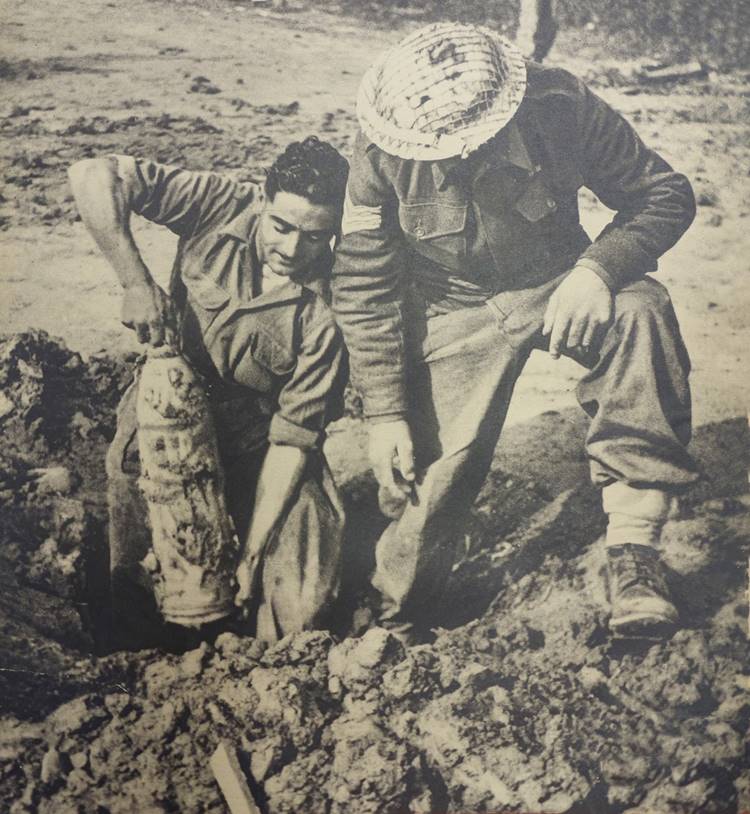
Merrick Hubert Eric Hine
Former Penn Church School pupil Merrick enlisted on the first day of the war and joined the Royal Air Force Volunteer Reserve as a trainee pilot. A year later, as one of “The Few”, he piloted his Spitfire throughout the Battle of Britain. However, in December 1940 he was reported missing in action over the English Channel. He was 24 years old.
Basil Holland
A law student from Nightingales, Penn, Basil, was the son of one of Britain’s leading judges. He enlisted in 1939 and became a navigator with the Royal Air Force Volunteer Reserve attached to Coastal Command. In March 1942, five days before his 25th birthday, he was killed in action over the English Channel. His body was found on a beach in Cornwall.
Richard Hugh Jagger
Richard, who had relatives living in Lost Cottage and St Anthonys Cottage,Tylers Green, was a pilot officer in the Royal Air Force Volunteer Reserve who died when his Spitfire crashed during a practice exercise in Northumberland on 14 April, 1941. He was 25 and is buried in St Margaret’s churchyard.
Ronald Alexander Keen
Ronald was a wood polisher and talented musician living in Homerton, West Avenue, Penn when war was declared and the brother in law of Thomas Harding, mentioned above. Ronald was a 34 year old driver with the Royal Army Service Corps in India when he died on 12 June, 1942. No details have been discovered surrounding the reason for his death.
Ian Maclean DFC
The son of Sir Donald Mclean, a former MP and Liberal Parliamentary Party chairman who lived in Beacon Hill, Penn, Ian was a navigator with the Royal Air Force. He was in action over Denmark in September 1943 when his plane crashed and he was killed. He was later awarded a Distinguished Flying Cross, below, for his efforts that night. He was 34, a former solicitor and is buried in Denmark.
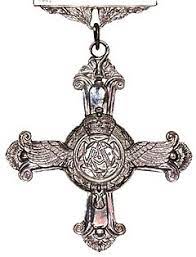
Guy Meredith Myles Mathews
Guy, a lieutenant in the Royal Armoured Corps, fought in the desert in the north Africa campaign and in 1939 lived at Shields in St John’s Road, Tylers Green. He died, aged 27, on 15 January, 1943 just four months before the Allies claimed total victory in the campaign. His name is on the El Alamein Memorial column in Egypt.
John Hedworth McCulloch
Twenty six year old John, of The Crest, Church Road, Penn, was a captain in the Seaforth Highlanders when he was killed in the second battle of El Alamein in November 1942. He died half way through the 18 day battle whose outcome proved a turning point in the war for the Allies. He was 26 and is buried in the British Military cemetery there.
Bertie Meeks
Bertie, a french polisher who lived in Alma Cottage on the common in 1939, was an older soldier who joined the 8th Home Defence Battalion of the Royal Berkshire Regiment involved in the defence of the country throughout the war. He died in circumstances unknown on 9 February, 1945 at the age of 46 and is buried in St Margaret’s churchyard.
David Iltid Nicholl
David was a major in the Royal Artillery who lived in Knotty Green and who had been seconded to work as a liaison officer in the War Office. We’ll probably never know what his mission was but in December 1942 he was on board a cruise liner en route to Australia with military and civilian passengers on board. The liner was torpedoed in the Azores by a German submarine, with all 656 passengers and crew bar one losing their lives.
Maurice Perfect
Like Albert Brooks, his fellow villager of the same age (see above), Maurice a gunner with the Royal Artillery, found himself in Italy in 1943 where he died in a fierce battle on 3 November, aged 21. He was named after his uncle Maurice who at died at Passchendale in the First World War, and is buried in a war cemetery at Torino Di Sangro.
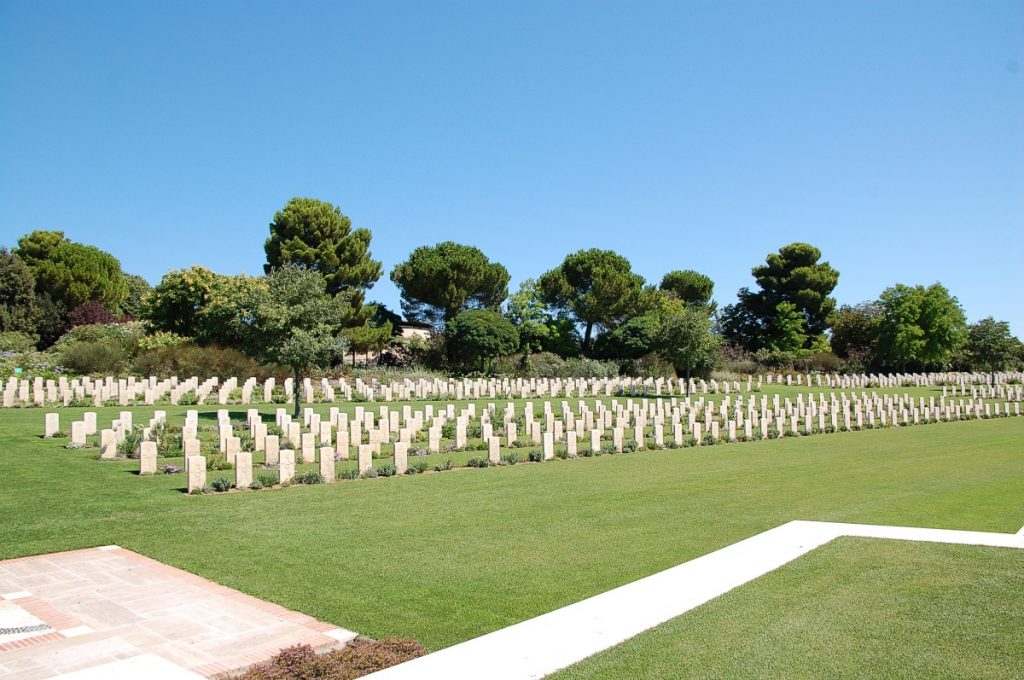
Martin Sansome Preston
Martin, from Knotty Green, was a second lieutenant in the Ox and Bucks Light Infantry who was killed during the Allied retreat to Dunkirk in May 1940. On 27 May he ordered all the other troops in his command to leave for the beaches while he remained alone at a machine gun post. He was 22 or 23 and engaged to be married. He is buried in a military cemetery in northern France.
Arthur Leonard Radwell
Arthur, the son of the village postman and chimney sweep who lived at Yonder in St John’s Road, was 18 when he married his sweetheart Minnie in 1942 before he went off to war. A private in the Royal Berkshire Regiment, he was captured in action and sent to a prisoner of war camp in Germany. On 27 July, 1944, he was shot while seemingly trying to escape and is buried in a war cemetery in Bayern.
Charles Gordon Richards
Charles, of Penbury Haven, Penn had been married for less than a year when in December 1943 he flew his single seater Typhoon to bomb V2 rocket sites around Dieppe in northern France. He did not return and his body was never found. He was 23 and his name is engraved on the Runnymede Air Force memorial.
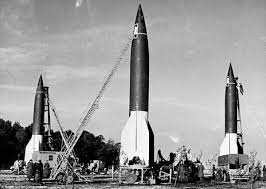
Ronald James Roberts
Ronald was the only son of Elijah and Ethel Roberts of Stampwell Cottage, Penn and was a sergeant air gunner in the RAF. He enlisted at 18 years of age in 1942 but was killed just eight months later in March 1943, aged 19, in an aircraft accident at West Stanton Harcourt in Oxfordshire. He is buried in Penn churchyard.
George Alfred Warren
Another victim of the North Africa campaign, George, a butcher’s assistant who lived with his parents in 1939 in Fairview, Hammersley Lane, fought as a trooper with the Royal Armoured Corps in Tunisia. Like his fellow villager Guy Mathews (see above), who had been killed three days before, George fell in battle on 18 January, 1943. He was 21.
Hugh Julian Langdon Webb
Hugh, whose parents lived in Knotty Green, was a Flight Lieutenant in the Royal Air Force piloting a Lancaster bomber on a pathfinding mission to locate and mark targets in the Nuremberg area of Germany. As he was returning on 31 March, 1944 he was shot down near Coblenz and he and his six crew members were killed. He was 23.
Donald Harry West
A lance corporal in the Royal Marines, 22 year old Donald was accidentally killed while based in Devon on 18 April, 1943. His father was a well known village businessman and world war one veteran Ted West, a leading figure in the home guard in the village. Donald is buried in St Margaret’s churchyard.
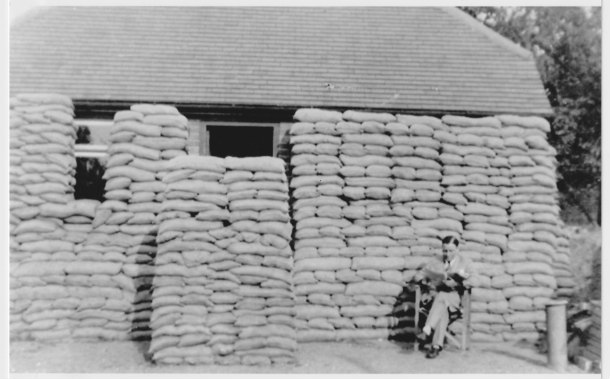
Alfred Donald White
The only son of Alfred and Maggie White of Old Park, Hammersley Lane, Alfred died on 7 June, 1944, the day after D-Day. A lance sergeant in the 2nd Airborne Battalion of the Ox and Bucks Light Infantry, Alfred died in the fighting surrounding Pegasus Bridge, a vital Allied objective over the Canal de Caen. He was 24.
(Most of the information above is taken from the Holy Trinity and St Margaret’s Heritage websites. Thanks to Peter Strutt and Ron Saunders for much of the research)
Memorial trees dedicated on Tylers Green common
AROUND 200 people, including some children from Tylers Green First and Middle Schools, attended a ceremony to dedicate 16 memorial trees planted to commemorate those named on the St Margaret’s Church war memorial who died on active service in the Second World War.
The ceremony immediately followed the annual Armistice Day remembrance service and two minute silence on Friday 11 November conducted by the Rev Graham Summers and John Youers from the Hazlemere branch of the Royal British Legion, which includes Penn and Tylers Green.
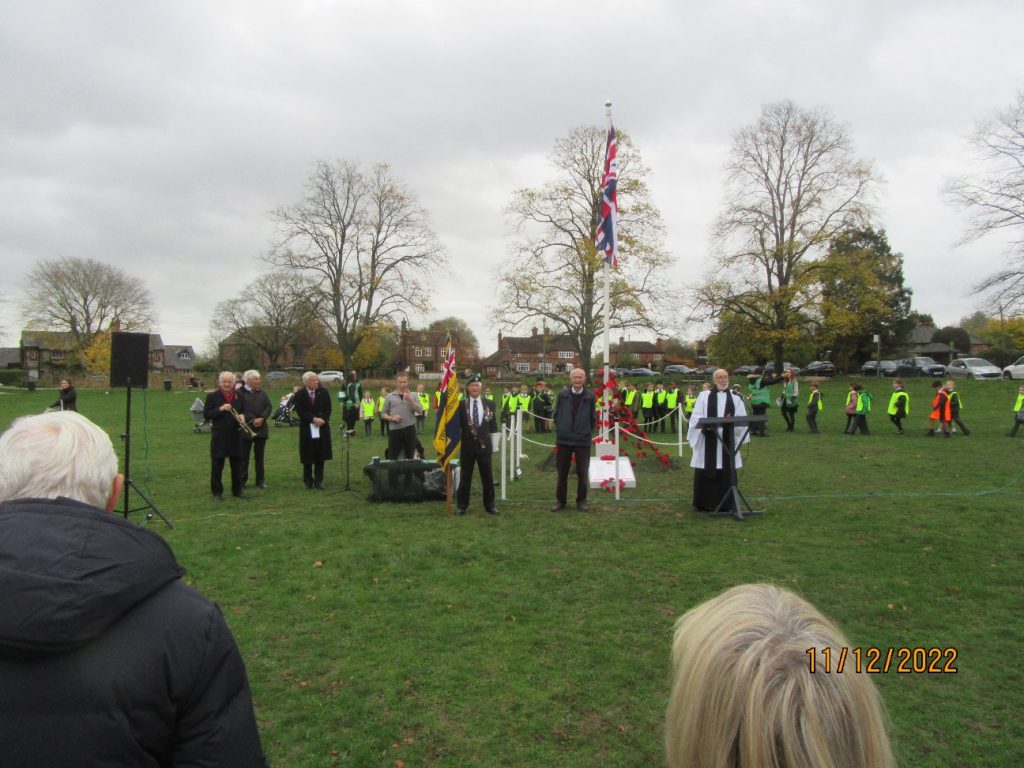
The trees were gifted by Chepping Wycombe Parish Council, which incorporates Tylers Green within its area, and were planted in and around Tylers Green common this month. They are accompanied by a plaque and at a later stage an interpretative board will be erected highlighting locations and background.
The trees – whitebeam and rowan – join other memorial trees that have been planted in earlier years in and around the common to mark the Tylers Green fallen in the First World War.
Earl Howe told the gathering: “It is a privilege for me to dedicate these 16 trees. The dedication has two strands to it. The first is a dedication to the memory of Her late Majesty Queen Elizabeth whose Platinum Jubilee, at her request, is being marked throughout the year by the planting of trees across the country as part of the Queen’s Green Canopy.
“The second dedication is to the 16 men who served and died during the Second World War and whose names are commemorated on the war memorial at St Margaret’s Church.”
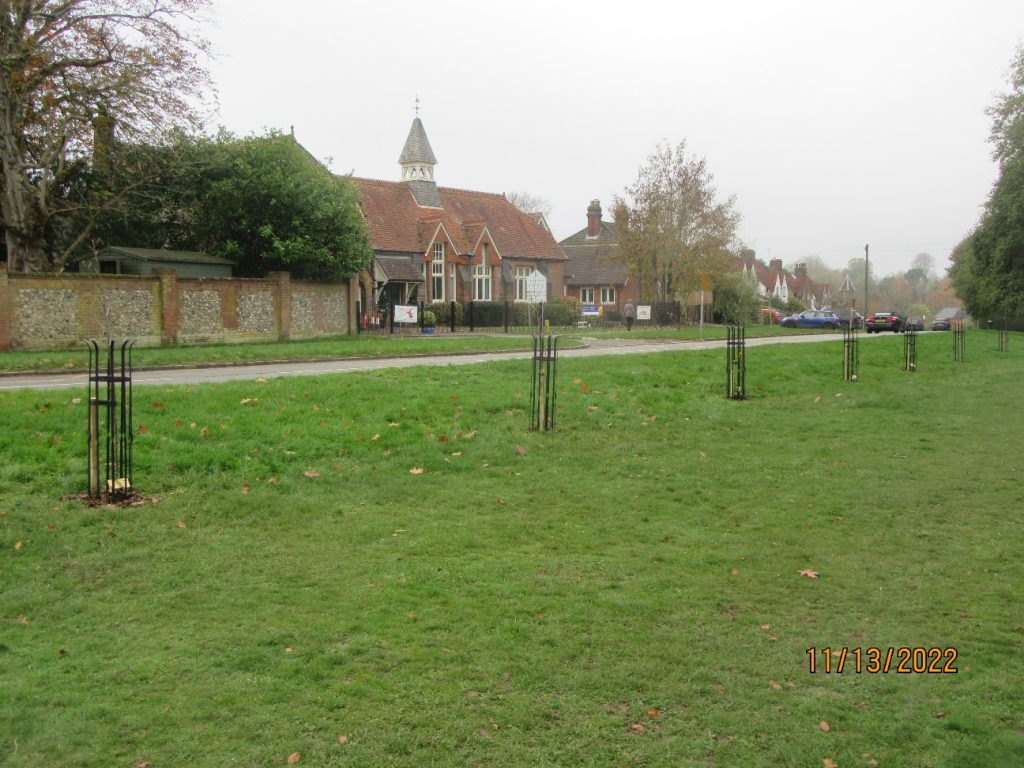
Cllr Katrina Wood, chairwoman of Chepping Wycombe Parish Council, thanked all those who had helped with the project and in particular Cllr Haydn Darch who instigated it and who saw it through.
After the ceremony, Cllr Darch thanked Earl Howe for the dedication; his fellow councillors for embracing the idea and funding it and the council clerk and grounds team for the practical work.
He added: “I would also like to thank Sharon Herron and Ron Saunders for their inputs and support and John Youers and the Rev Summers for agreeing to move to the front common and incorporating the dedication into this year’s remembrance. Bill Sadler, David Byrne and Geoff Roberts deserve special mention for embracing so enthusiastically my request to reinstall the flagpole/sound system on the front common, and of their own volition producing and funding the display of names in front of it.
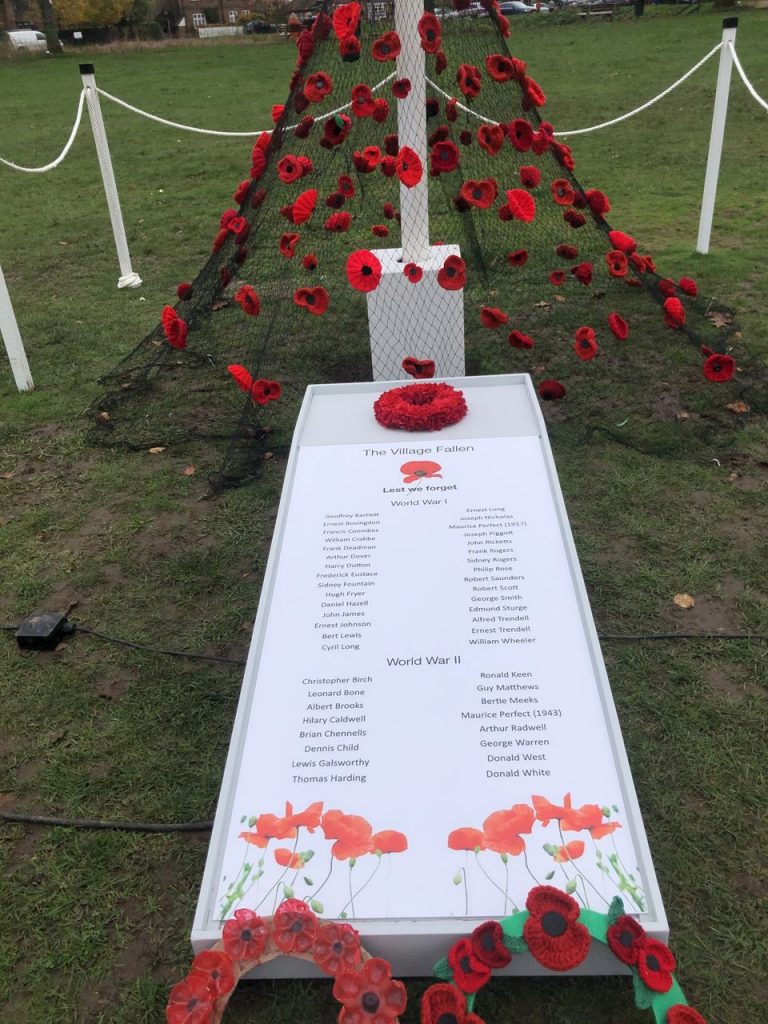
“Lastly I would like to thank the families of Thomas Harding, Maurice Perfect and Ronald Keen for supplying photographs and giving permission for us to use them on the yet to be installed new display boards. They attended the service and have written expressing thanks to Penn and Tylers Green for remembering and marking the ultimate sacrifice these and the other men made.
“It is intended to continue holding the remembrance service on the front common in similar fashion rather than the back common as in the past, joining the other important events held there throughout the year that help create the real sense of community which makes Penn and Tylers Green such a special place to live and bring up children.”
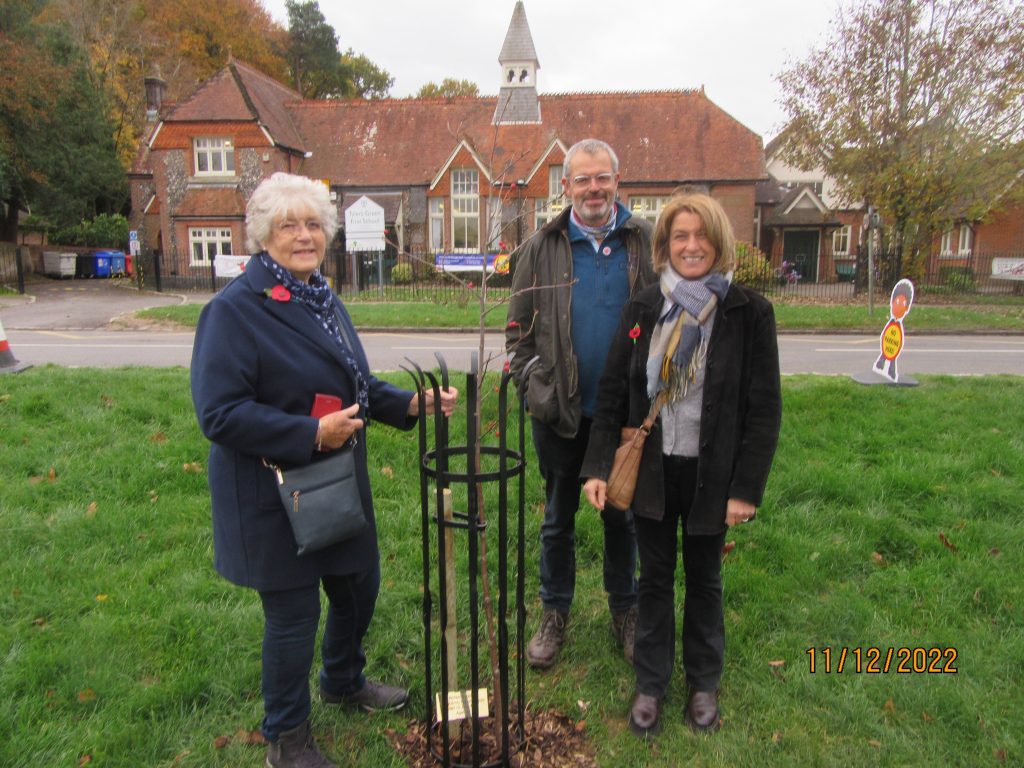
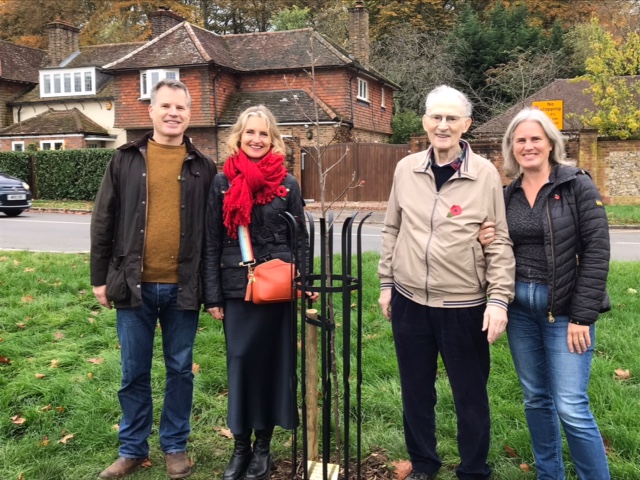
A personal tribute
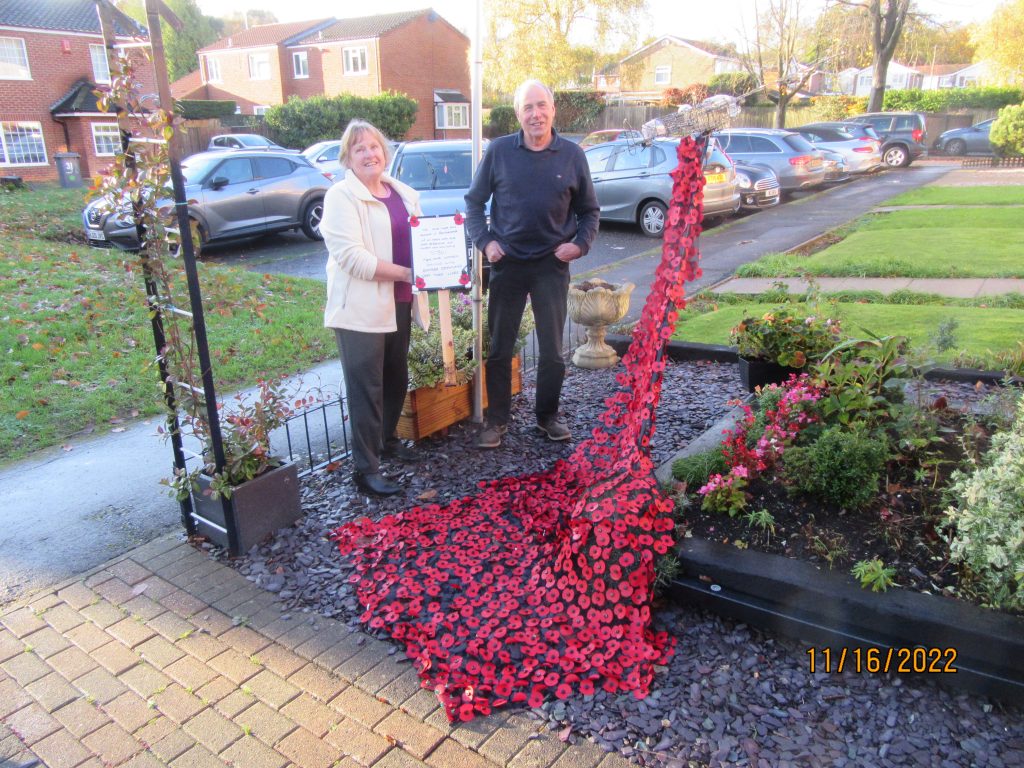
You can contact this blog at peter@pennandtylersgreen.com
